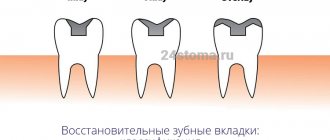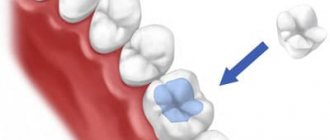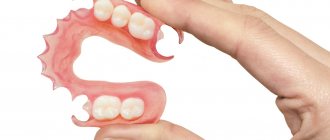For most of us, the browser is the most popular and most frequently launched program on the computer. We use it to listen to music, watch movies, check email and so on. And although browsers are updated almost every week, they still have a lot of problems. One of them is that it is not the most convenient to work with a large number of tabs.
In fact, working with tabs is like that joke about cats. Don't you like cats? You just don't know how to cook them. You just need to learn how to work with tabs and use the browser functions suitable for this. And you will not be able to understand how you lived before.
Display more or fewer Top Sites
- Hover your mouse over the Top Sites section to display the Edit .
- Choose from the following options:
- Show more adds another line of top sites.
- Show less removes the top sites line.
- Add allows you to add a specific site to your top sites by entering the link and site name. The sites you add will be automatically attached.
- Click Finish when finished.
What is a browser for?
Web pages, as we looked at in the last lesson, can consist of various elements: text, pictures, videos, etc. Usually the picture is in one place, the text is in another, the video is somewhere else, and the browser’s job is to put everything together. After you send a request to open a site (type the name of the site into the address bar), the browser works hard, concentrating on the arrangement of elements and how they will look. This task is the main one for all browsers - the correct opening of web page elements. And the large number of types of browsers is determined, firstly, by the operating system, as mentioned above, and secondly, by various technologies and functionality.
How to pin a tab
Pinning tabs is a feature that allows you to work with a site without worrying about accidentally closing it.
This can be done through the page context menu. Right-click on the desired tab and select “ Pin tab ” from the list. It will move to the upper left corner and decrease in size. There is no cross on it to close it. You can unpin it in the same way - you need to right-click the mouse and select the appropriate item in the menu.
How a computer and smartphone receive information from the Internet
What about the Internet? This is not broadcast. Why not broadcast? Who said? Very ethereal. Let's say, wireless Internet using Wi-Fi - the signal comes through the air, more precisely, through space without wires. Just like for a TV that works from an indoor or outdoor antenna.
And even if the Internet signal comes via wire, cable. What's in the cable? Yes, the same ether, the same signals, only they do not spread in all directions in space, but strictly inside the wire. All the same, the broadcast is filled to capacity with signals.
Great, we’ve sorted out a little bit about broadcasting for the Internet. What device can select signals from the Internet airwaves and convert them into something understandable? The same computer. And also a smart TV. Or laptop, tablet, smartphone.
There are smart home things (refrigerators, vacuum cleaners, etc.). They can connect to the Internet, receive the necessary signals from it, and even send back, of a kind, reports on the work done.
Let's go further. Let's say a computer or smartphone can connect to the Internet, listen to the airwaves and turn the airwaves into... What? For example, in texts. Or in pictures. Or in a video. And even in conversations, but not on the phone, but via the Internet, like in WhatsApp, in other applications, in social networks.
It turns out that on a computer or smartphone, every or almost every application or program can, in one way or another, listen to the Internet, catch signals addressed to the application (program), receive them and process them.
Read also: How to make money as a designer on the Internet
Let's say the Windows operating system really likes to find update files on the Internet. He just loves it so that he doesn’t have to work later, but is updated for a long, long time. And many Android applications do not skimp on resources to search the Internet for updates for themselves.
Managing tabs
Note.
Tab management is only available on Windows. When you have many tabs open, they can be difficult to navigate. Yandex Browser offers to work with a large number of tabs in a special panel, where the tabs are displayed in the form of a vertical list and grouped by window.
To open the Tab Control Panel, click the sidebar icon or Ctrl+Shift+E on Windows.
Note. The icon appears if you have enabled the sidebar and have more than ten tabs open. To add an icon manually, right-click on the sidebar and select the Manage Tabs option. To remove the icon, uncheck the Manage tabs option.
You can manage your tabs via:
Control panel icons Context menu Select the tabs you want. Click the icon: - to copy tab addresses; — to move tabs to a new window; — to close tabs; - to deselect. Select tabs. Right-click on any of the highlighted tabs. Select the desired action from the context menu.
Keyboard shortcuts (hotkeys)
Hotkeys are a very convenient way to manage tabs. Especially when the tabs become so tiny that they are even awkward to click on.
- Ctrl + Tab - switch between tabs to the right.
- Ctrl + Shift + Tab - switch between tabs to the left.
- Ctrl + W / Cmd + W on Mac - close the active tab.
These are just a few combinations that will allow you to quickly switch between tabs. There are many more keyboard shortcuts. And some of them may force you to use your keyboard instead of your mouse to manage your tabs.
Sync tabs
After synchronizing your devices with your Yandex ID, you will be able to view tabs that are open on another computer, tablet or smartphone. This feature is useful in the following situations:
- If you have two computers: home and work. You were browsing a website on your work computer and didn’t close the tab. At home, you need to open it and continue working.
- If you have a mobile device and a computer. You found an interesting site on your smartphone or tablet and want to watch it on the big screen.
What is a browser? And why such a strange word?
It's simple. A browser is a program that allows you to view web pages and do many other things. For example, sending mail, communicating on social networks, watching videos and downloading files. Now you are reading this article and the site opens using the installed browser on your computer. It takes its name from the English word “Browse”, which translated into our native language means “Browse, Scroll through”, very practical, isn’t it? There are many browsers, depending on your operating system, you may already have one of them. So, for example, Internet Explorer comes with Windows, and on MAC OS you can usually see Safari. The most popular currently Google Chrome, Firefox, Internet Explorer, Opera, Safari:
The debate about which browser is the best continues.
What is a browser's address bar?
Despite such a large number of varieties, the essence of all browsers is the same - to open websites. To do this, each browser has an address bar - a field where you can type the name of the site to open it. The address bar looks like this:
How to group tabs
Tabs can be combined into groups.
- Open Chrome on your computer.
- Click on the new tab icon.
- Right-click on the tab and select Add to new group.
- To change a tab group , right-click on the colored circle or title on the left. You can: indicate the name of the group;
- add tabs;
- delete group.
- To add a tab to an existing group , drag it there.
- You can also right-click on the tab and select the Remove from group .
Why update?
You need to update your browser regularly. Web pages are constantly being improved, modern software solutions are used, and the browser takes this into account.
If you do not update it for a long time, some pages will begin to load incorrectly.
Information can be distorted both externally and affect functionality. For example, videos on YouTube may stop playing, and some buttons on your favorite website may not work.
Emergency termination
How We have already become familiar with one technique. Later we will consider several more options for the development of events. First, let's look at closing tabs.
There is an emergency shutdown for browsers. This technique also helps to get rid of all closed tabs at once.
The following algorithm of actions is proposed:
- Press Ctrl + Alt + Del on your keyboard.
- Select "Task Manager".
- In the window that opens, select the appropriate (pre-opened) browser.
- Click on “End task/End job”.
All that remains is to agree with the warning about possible errors in the operation of the OS. That's all. This technique will help close all tabs if the browser is frozen.
Computer programs
The leader in this area is the Google Chrome browser. This is one of the fastest, most stable and convenient applications for desktop computers, laptops and tablets. Despite the high RAM requirements, users around the world prefer this browser.
Pros:
- bright interface;
- a large number of extensions;
- option to translate web pages;
- possibility of changing the design;
- high speed;
- simplicity.
Minuses:
- no VPN;
- there is no file compression function;
- There is no option to watch videos in the window.
Traditionally, Yandex Browser takes second place. Unlike its mobile version for computers and laptops, this software offers the following functions:
- high level of security;
- built-in VPN;
- Yandex Zen feed;
- quick access buttons and animated wallpapers;
- a lot of extensions;
- “Turbo” button, which allows you to minimize traffic;
- the ability to view videos in a separate window;
- own service for blocking phishing sites, annoying advertising, etc.
The disadvantage of this application is the abundance of functionality that not only a beginner, but also an experienced user will not be able to understand.
Also, one of the most popular browsers that everyone uses, including me, is Opera.
A special feature of this browser is that it has a built-in sidebar that can be configured in such a way that there will be access to all your social networks. You can view feeds and chat with friends without closing the web browser window.
There are a lot of advantages: a built-in VPN, thanks to which you can bypass any blocking, a Dark theme, and the ability to regulate video in a separate window.
In addition to convenience, ease of use and high performance, this browser quickly synchronizes all devices, it can implement hot keys and has a well-developed functionality for blocking ads and malicious sites.
Another popular browser is Mozilla Firefox, which is famous for both its advanced functionality and its complexity.
You won’t find the classic names of options here; for example, instead of Browsing History, a Journal is built in here. In addition to the main advantages, such as convenience and high speed, some differences from other bowsers can be noted:
- low consumption of PC or laptop resources;
- open source;
- convenient data loader;
- versatility of interface design;
- many standard functions and additions to them;
- Correct loading of even the most complex web pages at high speed.
Disadvantages include confusing tabs, lack of familiar navigation and lack of your own VPN.
Mouse help
How can A restore all pages? Finish working with all previously studied elements?
A computer mouse will help you cope with the tasks. Just right-click on the line with browser tabs. Next, the user must choose what to do:
- Open a new one.
- Close all tabs on the left/right.
- Close the selected page.
- Open a recently closed tab.
In addition, this technique will help to pin pages, duplicate them, and also add all open ones. There is nothing difficult or incomprehensible about this.











